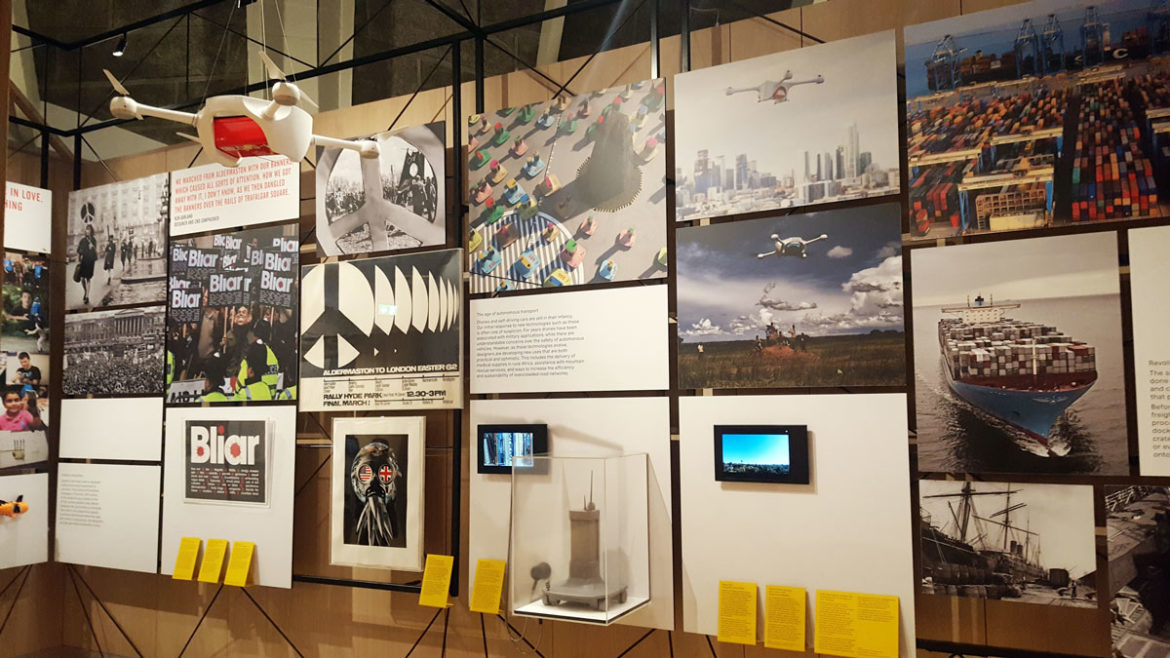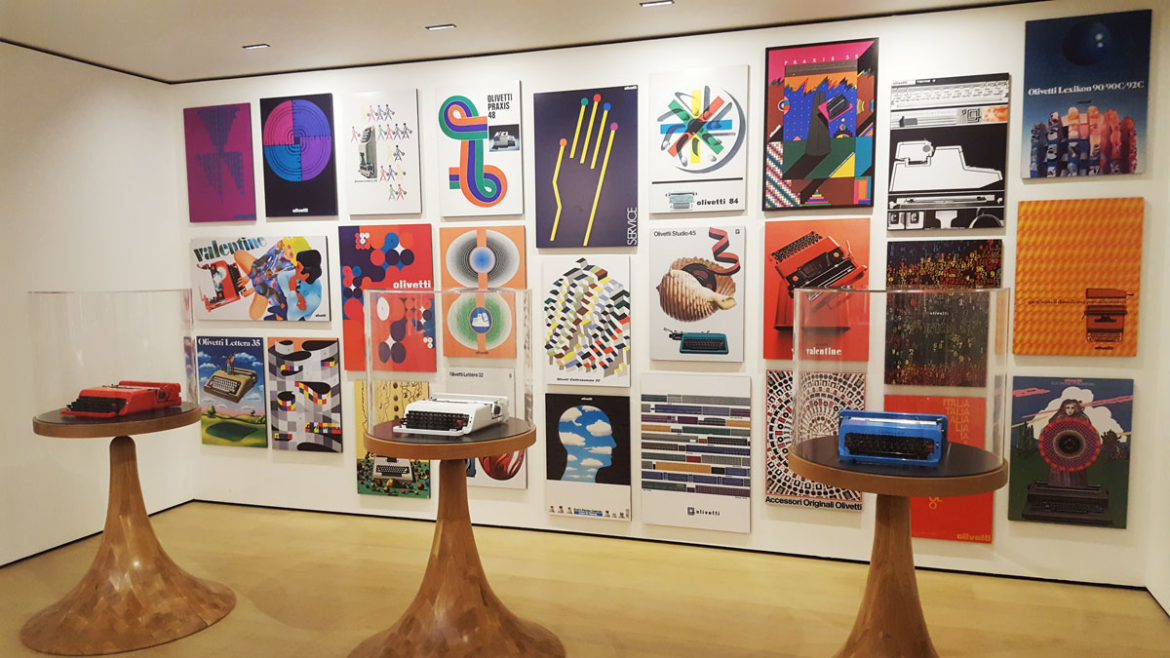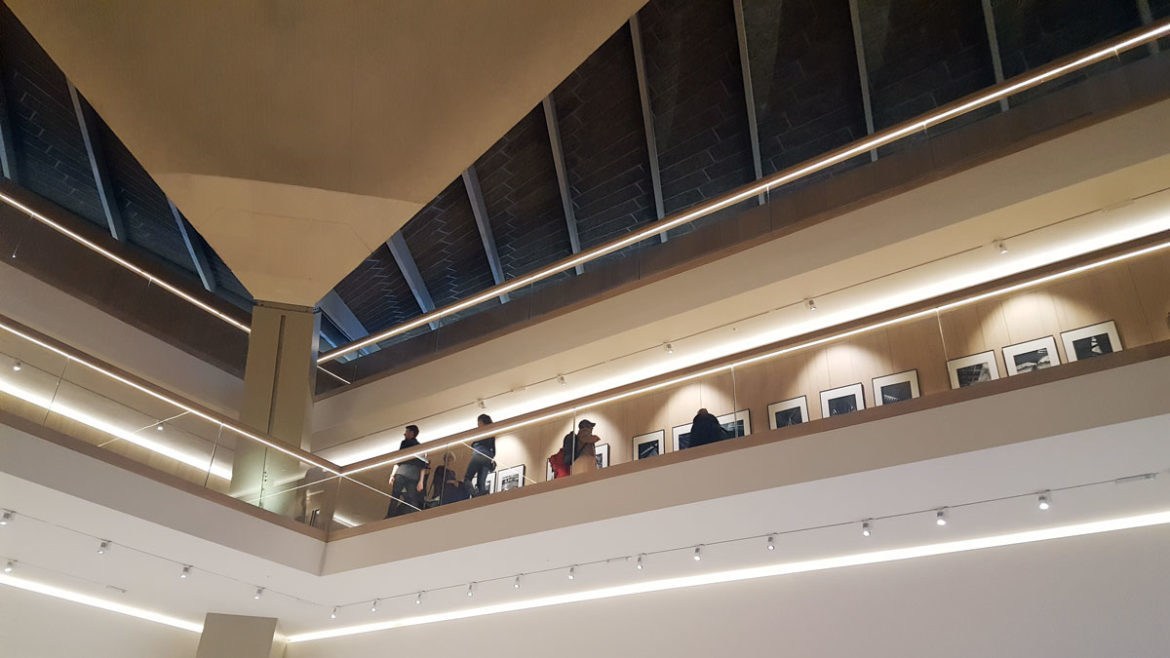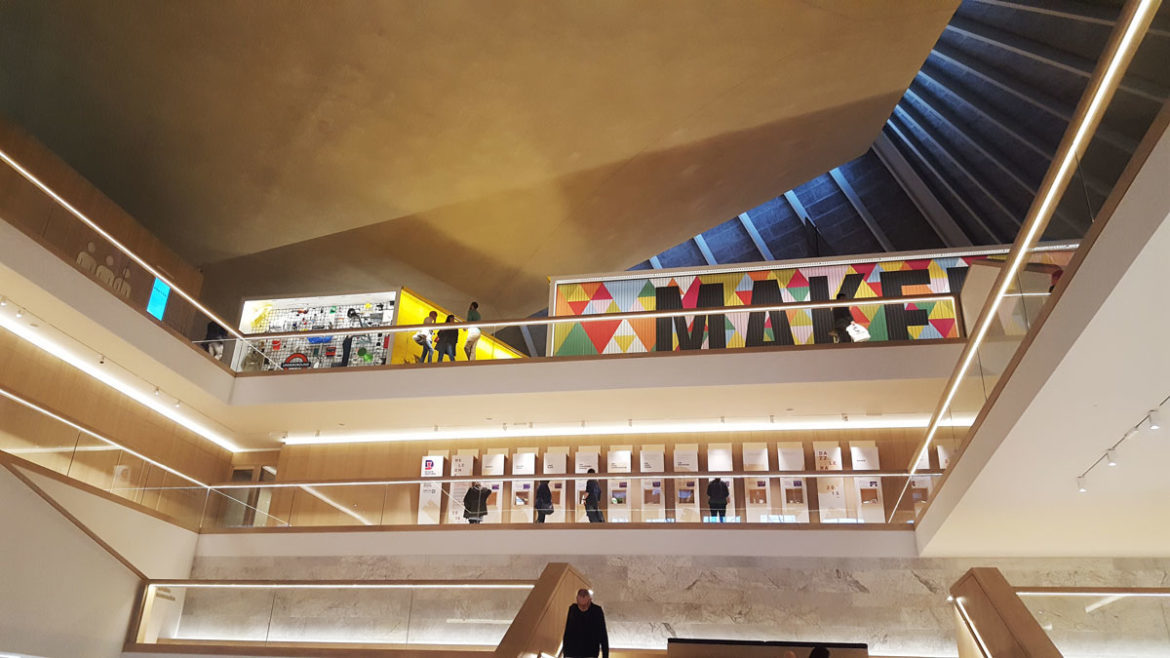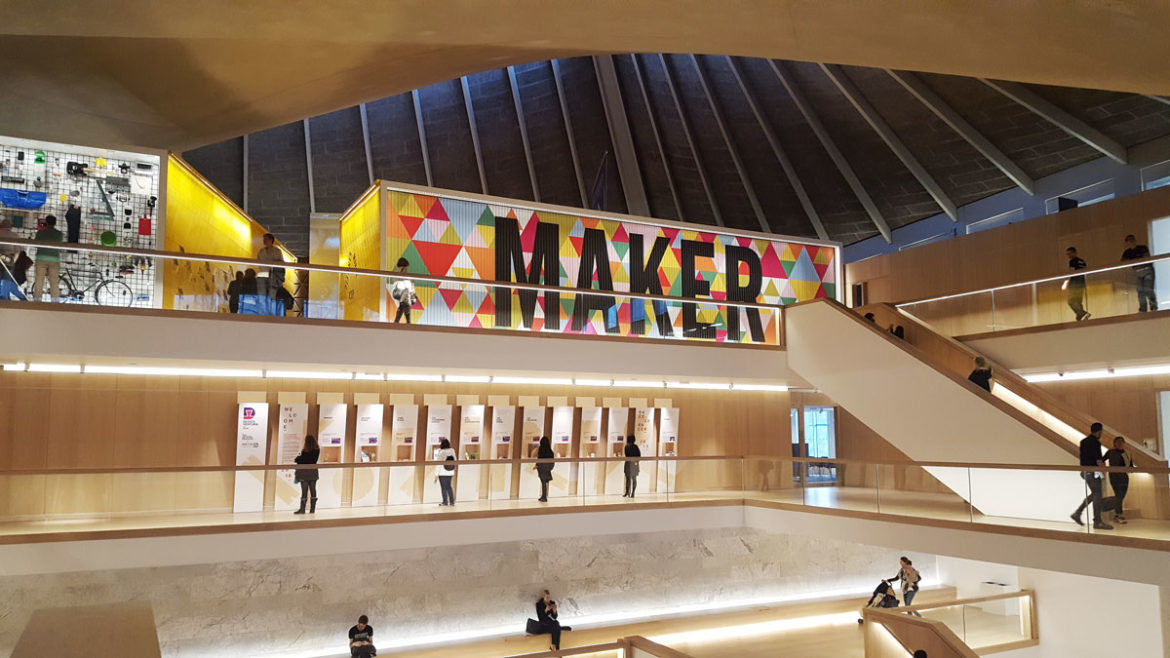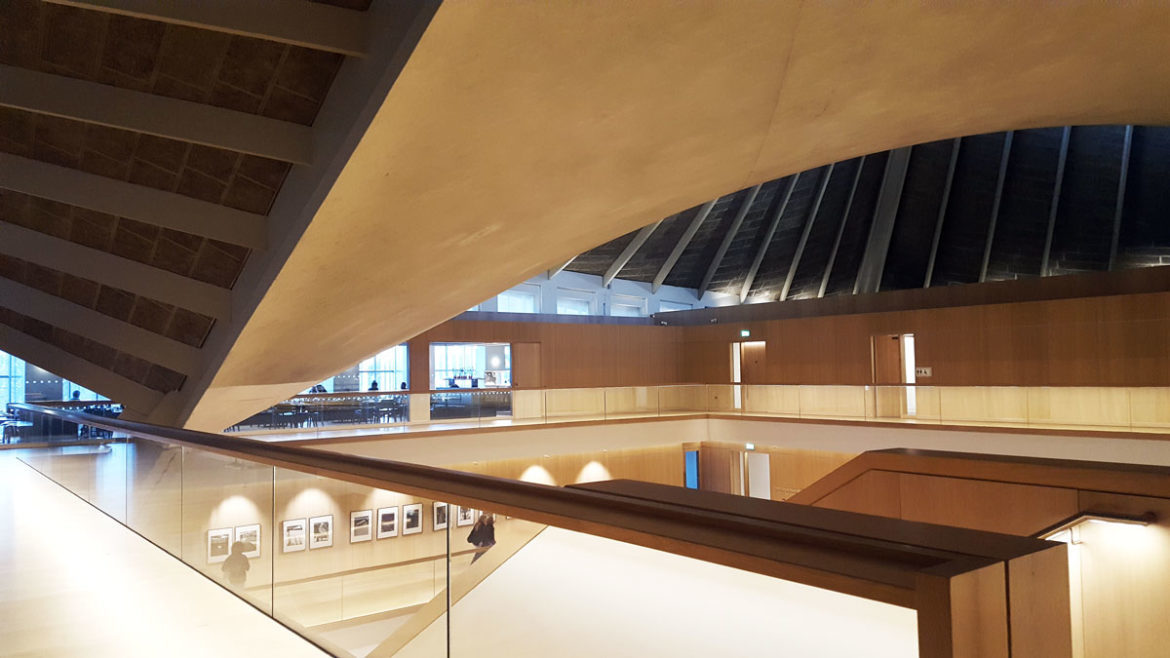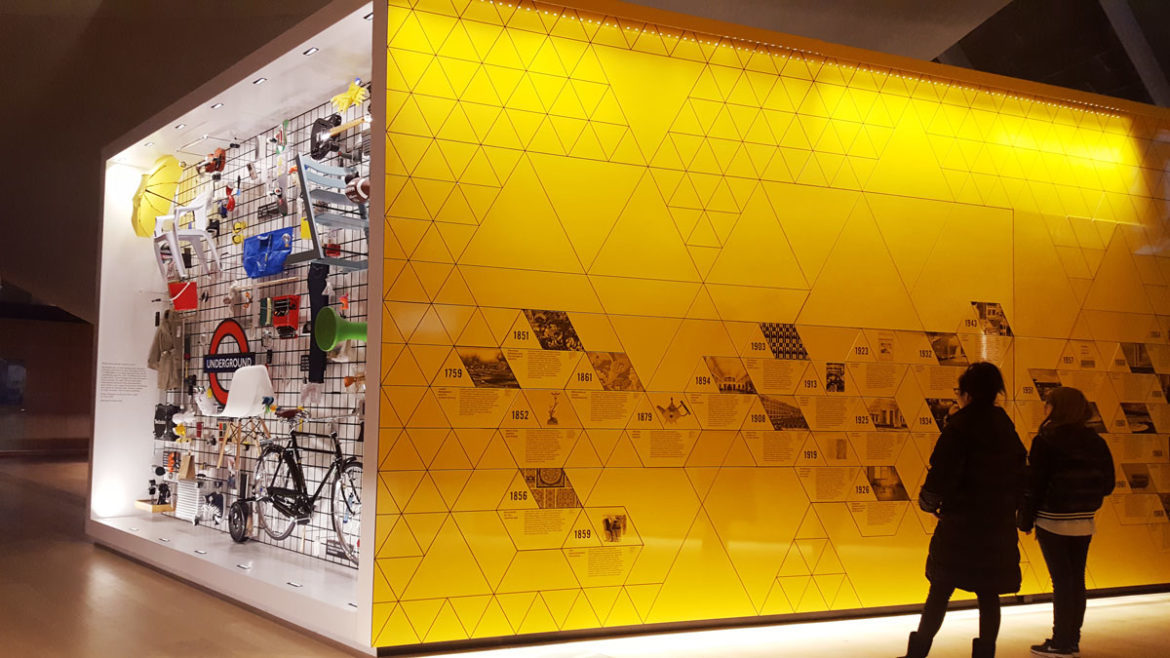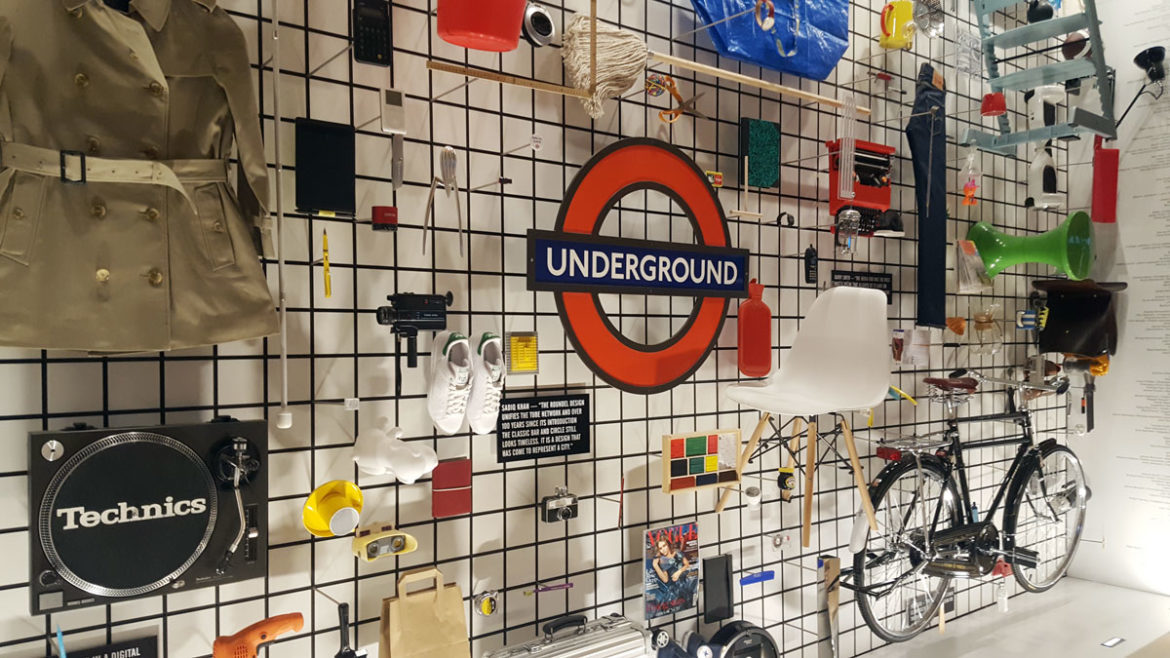Towards the end of 2016, The Design Museum in London moved to Kensington to be located at the former site of the Commonwealth Institute. Since then, the museum has become a world-renowned reference point for all things design.
The building itself has been redesigned by architect John Pawson, and it is a real wonder of architectural design. It is a huge 10,000m2 space, which, thanks to the preservation of its unique parabolic roof, has retained the essence of the original modernist 1960s building.
Pawson worked closely with Allies and Morrison and Dutch firm OMA to complete the restoration, and the resulting edifice is truly incredible. The interior, designed with wood and concrete, is spacious, open and avant-garde. The rooms, set over five floors, are accessed from a grand oak foyer, with steps and staircases like seats that zigzag their way upwards, framing the fantastic curves and angles of the Commonwealth Institute’s ceiling.
The space that Pawson has created is a perfect example of an architectural project that manages, both in aesthetic and function, to represent what it is going to house. In this case, a museum dedicated to design, where the architecture is integrated with the art, the exhibitions and the people that will occupy it. But in spite of this, not all the reviews have been positive. The Guardian’s architecture and design critic Oliver Wainwright believes that the feeling of a museum has been lost in the redesign and that the new space in High Street Kensington feels more like a luxury hotel.
Whether or not you’re a fan, it’s clear that the re-opening of the The Design Museum in London back in November 2016 marked the beginning of a new chapter, one that looks to be much more dynamic and packed than what they were used to in their old setting on the banks of the Thames over in the east of London.
The Design Museum is the UK’s most important museum dedicated to design, in all its disciplines: architectural, textile, graphic, industrial and interior. Since it opened its doors back in 1989, it’s displayed everything from an AK-47 rifle to Louboutin heels. The museum has put on over 100 exhibitions, welcomed more than five million visitors and showcased work from some of the world’s most celebrated designers and architects including Paul Smith, Zaha Hadid, Jonathan Ive, Miuccia Prada, Frank Gehry, Eileen Gray and Dieter Rams.
The permanent display Designer Maker User offers around 1,000 objects (of the 3,000 that make up the entire collection) from the 20th and 21st centuries, viewed through the angles of the designer, the creator and the user. There’s also a crowdsourced wall, with everyday objects that shape our day-to-day lives – these could be a can of Coca Cola, a £5 note, some washing up gloves, etc. This section also explores the impact of design over politics, fashion and music.
2017’s programme included interesting exhibits such as Fear & Love which featured 11 installations from some current designers and architects who explored networked sexuality, intelligent robots, slow fashion and settled nomads.
Between March and June 2017, The Design Museum also played host to Imagine Moscow: Architecture, Propaganda and Revolution, an exhibition which explored the capital of the Revolution through the lens of the daring architects of the 1920s and early 1930s. The exhibition showed lots of unedited and rarely seen before material, such as large scale building plans, drawings, sketches, posters and propaganda. The exhibit paints an idealistic picture of the Soviet capital which never came to be – it does this by analyzing six architectural landmarks that were to stand close to the Moscow’s Red Square, but that were never built. With these visionary projects, which coincided with the disappearance of the Avant-Garde movement, these architects imagined cityscapes built so high that they might break the sky itself at the same time as solving problems of overpopulation. “With this vision, they were trying to make an impact on daily life in order to make the world a better place to live” curator of the exhibition, Eszter Steierhoffer, said to the EFE agency.
We at Brit Es hope that the move to west London, to a space three times the size of their previous home, will be the start of a larger programme that everyone can enjoy – one that will help make the museum Europe’s go-to design destination.
[su_note note_color=”#eaeae9″]Translated to English by Ben Ffrancon Davies[/su_note]

